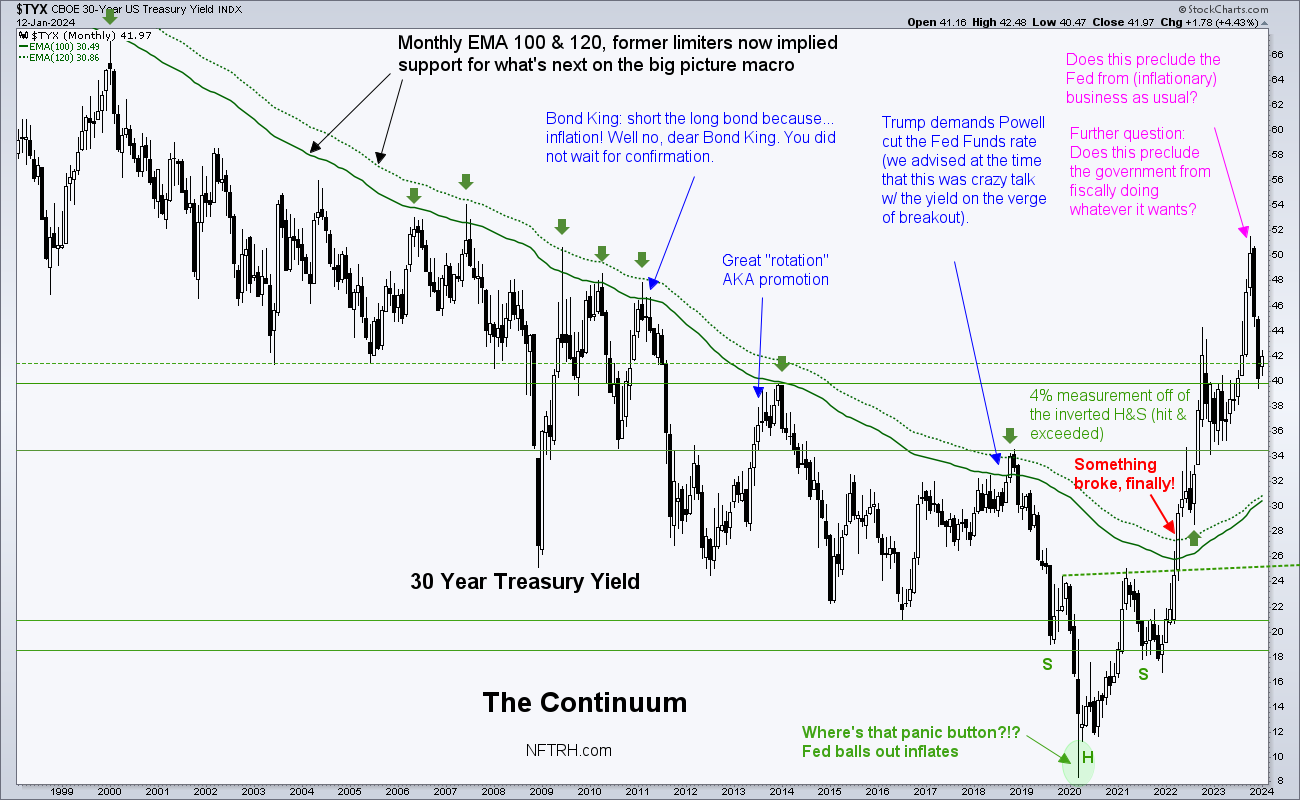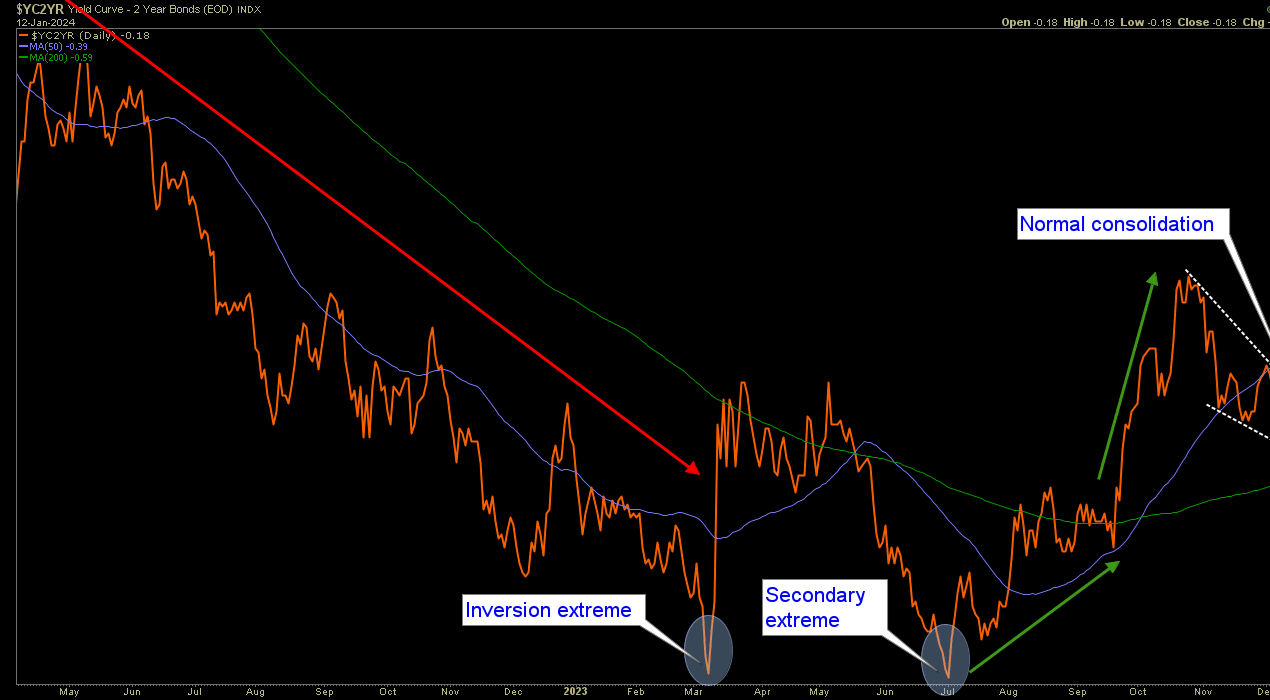2024 Brings Change, Says Bond Market


- Interim inflation trades now, deflationary episode, and then in the coming years a bigger, badder and more global inflation in an age of war, unrest, social discord and shifting monetary systems from the monetized west to the commodity/resource-rich east and EM/FM.
- Disinflation into deflation sooner rather than later (our original plan), followed by balls out inflation that again, will not benefit those areas (eg, Western stock markets) to the degree it has previously. Commodities, resources, precious metals and EM/FM could see a new era of out-performance.








 Email us
Email us